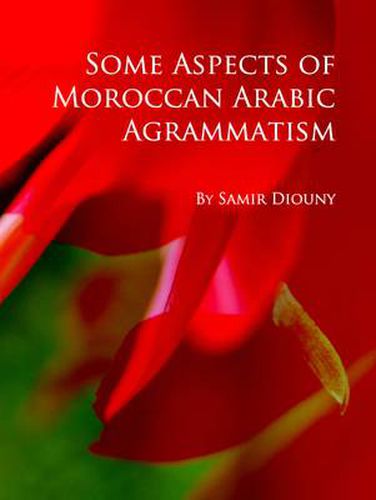Readings Newsletter
Become a Readings Member to make your shopping experience even easier.
Sign in or sign up for free!
You’re not far away from qualifying for FREE standard shipping within Australia
You’ve qualified for FREE standard shipping within Australia
The cart is loading…






This book is a contribution to the ongoing debate in agrammatism, an acquired language disorder resulting from left hemisphere brain damage. The aim of the book is (1) to give a comprehensive account of agrammatism and outlines and critically examines the different accounts of agrammatic production and asyntactic comprehension, (2) to address morphological and structural properties of Moroccan Arabic agrammatic speech and (3) to put under scrutiny Friedmann and Grodzinsky’s (1997) syntactic account of tense and agreement in production and across modalities. The book attempts to answer two important research questions: Are tense and agreement dissociated as predicted by the Tree-Pruning Hypothesis (Friedmann and Grodzinsky, 1997)? Is the tense/agreement dissociation production-specific , or does it extend to comprehension and grammaticality judgment? A third objective of the book is to examine the comprehension abilities of four Moroccan Arabic-speaking agrammatic subjects in the light of the Trace Deletion Hypothesis (Grodzinsky, 1995 a, b). A major research question is whether or not active sentences and subject relative sentences are understood better than object relative sentences.The book takes the view the tense/agreement dissociation reported for Hebrew (Friedmann and Grodzinsky, 1997) and German (Wenzlaff and Clahsen, 2003) can be replicated in Moroccan Arabic. However, the syntactic account as outlined in Friedmann and Grodzinsky (1997) cannot account for the tense/agreement dissociation as Moroccan Arabic has the agreement node above the tense node. In addition, the Trace Deletion Hypothesis cannot account for the comprehension difficulties experienced by the four Moroccan Arabic-speaking agrammatic subjects; the case is so because both subject relatives and object relatives are understood below chance level. Based on data collected through different experimental methods, it is argued that the deficit in agrammatism cannot be explained in terms of a structural account, but rather in terms of a processing account. Access to syntactic knowledge tends to be blocked; grammatical knowledge, however, is entirely intact.
$9.00 standard shipping within Australia
FREE standard shipping within Australia for orders over $100.00
Express & International shipping calculated at checkout
This book is a contribution to the ongoing debate in agrammatism, an acquired language disorder resulting from left hemisphere brain damage. The aim of the book is (1) to give a comprehensive account of agrammatism and outlines and critically examines the different accounts of agrammatic production and asyntactic comprehension, (2) to address morphological and structural properties of Moroccan Arabic agrammatic speech and (3) to put under scrutiny Friedmann and Grodzinsky’s (1997) syntactic account of tense and agreement in production and across modalities. The book attempts to answer two important research questions: Are tense and agreement dissociated as predicted by the Tree-Pruning Hypothesis (Friedmann and Grodzinsky, 1997)? Is the tense/agreement dissociation production-specific , or does it extend to comprehension and grammaticality judgment? A third objective of the book is to examine the comprehension abilities of four Moroccan Arabic-speaking agrammatic subjects in the light of the Trace Deletion Hypothesis (Grodzinsky, 1995 a, b). A major research question is whether or not active sentences and subject relative sentences are understood better than object relative sentences.The book takes the view the tense/agreement dissociation reported for Hebrew (Friedmann and Grodzinsky, 1997) and German (Wenzlaff and Clahsen, 2003) can be replicated in Moroccan Arabic. However, the syntactic account as outlined in Friedmann and Grodzinsky (1997) cannot account for the tense/agreement dissociation as Moroccan Arabic has the agreement node above the tense node. In addition, the Trace Deletion Hypothesis cannot account for the comprehension difficulties experienced by the four Moroccan Arabic-speaking agrammatic subjects; the case is so because both subject relatives and object relatives are understood below chance level. Based on data collected through different experimental methods, it is argued that the deficit in agrammatism cannot be explained in terms of a structural account, but rather in terms of a processing account. Access to syntactic knowledge tends to be blocked; grammatical knowledge, however, is entirely intact.